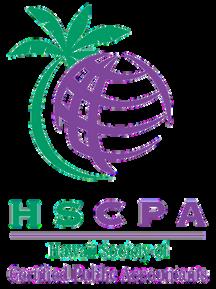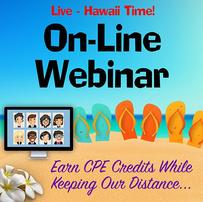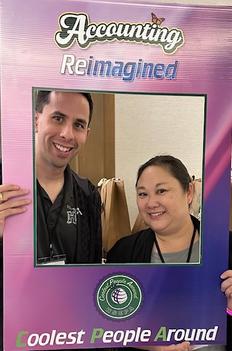Pay for No Work
In our state, we have a civil service system that is supposed to protect workers Workers are not to be fired unless the employer has “cause,” or a good reason, to fire them. But, as we will see, the system that has built up around this principle is now broken.
Under most of the union agreements with governmental employers that are now in place, an agency can suspend the employment of a worker for up to 30 days if they think that worker did something bad The agency can then investigate and terminate the worker if it has cause to do so The worker, then, has a chance to file a grievance against the firing and have the matter heard by an arbitrator.
If the agency needs more time than 30 days to conduct its investigation, it needs to resume paying the worker. A worker in this situation either can be told to go back to work either in the same job or a similar job, or is put on “administrative leave,” like paid vacation Administrative leave means that the worker doesn’t come to work, but is still paid, and earns the same benefits as if he or she were still working If the class of employees of which the worker is a part receives a unionnegotiated raise, for example, the worker gets that raise too. The worker also earns vacation days, sick days, and service credit that figures in to his or her pension when the worker retires
This system apparently was designed to encourage agencies to conduct their investigations quickly and then make up their minds quickly about what action, if any, to take against the worker.
That hasn’t happened in many instances.
In July 2024, Civil Beat reported that many of these investigations were taking months or years. Between 2020 and 2023, the Hawaii Health Systems Corporation had at least 120 workers on paid administrative leave for an average of 2½ months each The Hawaii Department of Education had at least 70 workers in that situation for an average of 10+ months each The Hawaii Department of Health had at least 30 workers on paid administrative leave for an average of 10 months each. The total salary cost to taxpayers just from these agencies is $6 3 million For zero productivity
And those are just the average cases Civil Beat, in a follow-up report, mentioned the case of an employee of the Honolulu Prosecuting Attorney’s office who was accused of claiming $12,000 of faked mileage reimbursements The investigation into his case has dragged on for five years, costing taxpayers upwards of $300,000. It is unfathomable how an investigation into misconduct, in an office that is full of investigators and attorneys whose job it is to build
‘watchdog’for mHawaiitaxpayers’ oney TosupportTFH’smission,pleasedonatehere
casesagainstwrongdoers,could beallowedtotakethatlong.
Perhapstheproblemisthat governmentagenciesdon’tfeel investedintheoutcome Afterall, it’snottheirmoneythatisbeing wastedhere;remember, governmentagenciesdon’tpay taxes,taxpayerspaytaxes People furtherupthefoodchainneedto beaccountablefordebacleslike these.
Butwhydoesagencyleadership havetobeinvestedinthefateof oneortwoallegedlybadapples wheretheagencyemploys hundredsorthousands?The answerismorale.Whowantsto slaveandtoilatanagencywhere acoworkerwhoallegedlydid somethingbadisrakinginthe cashwithouttheslavingand toiling?
Administratorsoflargeagencies, especially,shouldbemadetofeel thepainevenwhenafewmillion dollarshereorthereisonlya smallfractionoftheagency’stotal budget Thatfewmilliondollars certainlycanbebetterused elsewhere.
Tom Yamachika is President of the Tax Foundation of Hawaii - the ‘watchdog’ that keeps an eye on Hawaii’s taxes Tom is also the owner of Aloha State Tax, a small law firm with emphasis on State taxes Prior to going solo and the TFH, Tom was a principal with Accuity LLP where he managed the tax consulting practice, including quality and risk management and practice development
August 11, 2025 ⭐ 11:30 a.m. to 2:00 p.m.
Stay ahead with the latest developments under The One Big Beautiful Bill Act, featuring expanded tax breaks for tipped workers, overtime pay, Social Security benefits, and select car loan interest. We’ll also cover key provisions including green energy incentives, employee retention credit claims, and opportunity zones.
Gain clarity on how key elements of the 2017 Tax Cuts and Jobs Act (TCJA) have been extended, modified, or allowed to expire - including updates to the SALT deduction impacting both individuals and businesses.
We will round things off with highlights from Hawaii’s newest tax legislation, including TIR 202502 regarding withholding requirements for nonresident partners and beneficiaries starting in tax year 2015 (January 1, 2025).
We are seeking your comments on TIR 2025-02. The Governor also vetoed two tax bills this yearto be discussed. Register here!
Ron Heller
Kurt Kawafuchi
Chris Mashiba
Tom Yamachika
Your paragraph text
SELECTINGTHE Right AI Tools
For all the promises being made about artificial intelligence (AI) right now, it’s not a magic wand. But with the right approach, it can be a powerful lever for change The firms seeing the biggest gains don’t chase trends. They collaboratively solve real problems
You have plenty of AI tools to choose from, but identifying the right tool requires aligning innovation with purpose, involving the people who make your firm run and committing to a process that ensures long-term value
skipping ahead to the solution without considering the underlying requirements. No amount of automation can fix a process you haven’t defined or a problem you don’t fully understand.
By Heather Robinson Boomer Consulting, Inc.
Each scenario could point to a different class of AI solution. Some may require intelligent document processing, while others need machine learningpowered analytics
Without clarity on the “why,” it’s easy to invest in tools that add complexity instead of value
At Boomer Consulting, we believe every AI investment should move your firm closer to its strategic goals So, the next time someone in your firm says, “We need AI,” push the conversation forward by asking, “What’s the problem we’re solving and who needs to be at the table?” That’s where transformation begins
Define the problem before you pick the tool
The most common misstep firms make when selecting an AI tool is
Start by asking:
What workflow or outcome are we trying to improve? Who is impacted most by this challenge internally and externally?
How are we solving this today, and where does it fall short?
For example, are you trying to reduce manual data entry in client onboarding? Speed up document review during busy season? Or deliver faster, more accurate insights for advisory services?
Establish decision criteria
Once you define the problem, establish a consistent set of filters for evaluating potential tools. These filters should reflect your firm’s values, priorities and capacity to adopt and maintain new technology.
Key decision criteria include:
Functionality fit. Does the tool directly support the workflow or task you’re aiming to improve?
Ease of integration. Will it integrate seamlessly with your existing tech stack, or will it require custom workarounds?
User experience. Is it intuitive for both tech-savvy team members and those less familiar with AI?
Security and compliance. Does it meet your firm’s data privacy standards and applicable regulations?
Scalability. Will it only work for one team or scale across the entire firm as your needs evolve?
ROI and time to value. How long before you see measurable benefits, and what does success look lik
Having these filters in place before you schedule vendor demos ensures your decisions remain grounded in strategy rather than hype.
Involve the right stakeholders The most effective AI decisions happen when leaders bring both technology and process voices to the table.Technology leaders can evaluate infrastructure needs, integration, licensing and data security risks. Meanwhile, process leaders understand how work gets done across teams.They’re best positioned to assess adoption risks, user experience challenges and potential impact on the client journey
Pilot intentionally
Rather than launching an AI tool firmwide on day one, start with a targeted pilot. Choose a team or workflow with a well-defined process and measurable outcomes.
Track usage data, time saved, error rates, or other key performance indicators
Create a Feedback Loop
AI isn’t a “set it and forget it” investment. Like your firm’s processes, AI tools require ongoing evaluation and refinement.
Establish regular checkpoints to assess:
Is the tool being used as intended?
Solicit user feedback early and often from the people doing the work Refine the implementation plan before scaling
Are we realizing the benefits we expected?
This cross-functional approach helps avoid a common trap: investing in a tool that works technically but fails to stick because it doesn’t fit the way your teams actually work.
An intentional pilot helps build internal buy-in, highlight unforeseen challenges and reduce the risk of costly missteps It also allows your firm to test both the tool’s effectiveness and the support systems (like training and documentation) required for broader adoption
So, the next time someone says, “We need AI,” respond with, “Let’s talk about the process first.”
Even successful implementations can lose steam without a feedback mechanism Ongoing review helps your firm adapt as workflows evolve, team members change or the solution provider releases new features
Choosing an AI tool shouldn’t feel like a gamble When you pair the right technology with a strong process, you unlock efficiency, firm-wide confidence, innovation and momentum
Your investment in AI should be strategic, not reactive The most successful firms don’t chase every new tool; they solve real problems, involve the right people and measure impact along the way What adjustments technical or procedural are needed? Do users have the training and support they need?
By Donny Shimamoto, CPA.CITP, CGMA
Ditch the Ladder, Climb the Jungle Gym:
Rethinking Career Paths in Accounting
Accounting is no longer just about numbers. It’s about navigating possibilities--and career paths should reflect that.
For decades, the accounting profession has sold the dream of a singular path to success: graduate with your degree, land a job at a firm, and work your way up the ladder to partner Or exit the firm and become a controller and work your way up to CFO
For many, that ladder was clear, structured, and (for some) satisfying
But for too many others especially younger generations, mid-career changers, and those from historically underrepresented backgrounds the ladder can feel limiting, outdated, or even out of reach Or even worse, not reaching the top can feel like failure
From Climbing Up to Moving Around
Unlike a ladder, a jungle gym offers multiple ways to reach new heights. You can climb up, sideways, even backwards and sometimes take a step down to
Accounting is no longer just about numbers It’s about navigating possibilities -and career paths should reflect that.
Accountants turned into startup founders, authors, or educators
ultimately leap forward. That’s the kind of career agility that today’s accountants need
Consider the rise of nontraditional accounting roles:
It’s time for the profession to replace the traditional ladder with a jungle gym (Thank you, Sheryl Sandberg) a more flexible, dynamic, and inclusive vision of career growth that reflects the complexity of modern accounting and the aspirations of today’s workforce.
Data analysts and automation specialists inside firms; ESG consultants leading sustainability initiatives; Internal firm coaches and DEI strategists; Client advisory professionals specializing in tech stack design or process reengineering; and/or
These are not deviations from the profession They are evolutions of it And yet, many firms and organizations still talk about success as if there’s only one direction: up the ladder Why the Ladder is Losing Its Appeal
Three major trends are accelerating the shift away from the ladder model:
1 Changing Talent Expectations:
Today’s professionals are seeking purpose, autonomy, and balance They want roles that align with their values, leverage their strengths, and allow for personalization A rigid path to the executive level doesn’t appeal to everyone nor should it have to We should honor diverse definitions of success, not just the titles on a business card
2 Evolving Business Models:
The rise of advisory roles in firms and finance, niche consulting in non-accounting areas, and AI-enabled workflows is redefining what it means to be valuable in a firm Expertise is no longer solely vertical it’s lateral, interdisciplinary, and collaborative
3. Urgency Around Retention:
While some research suggests the tide of quiet quitting has eased, the cost of losing talent is still an issue for many accounting firms and finance teams. But many of those professionals aren’t burned out – they're boxed in.
What the Jungle Gym Looks Like in Practice
data analytics and operations
Normalize lateral transitions and rotations as growth opportunities These can deepen perspective, prevent burnout, and build team resilience
Empower employees to shape their own trajectories Let them combine technical, leadership,
profession Whether you're a managing partner, CFO, HR director, or young professional trying to find your place, ask yourself:
Are we offering real career agility, or just lip service?
Are we rewarding curiosity and lateral growth?
Are we building teams that people want to stay in or escape from?
Let’s Design the Profession We All Want
Transitioning to a jungle gym model doesn’t mean abandoning structure. It means expanding it.
Instead of a single upward track, offer multiple pathways with interchangeable roles across departments, service lines, or specialties. A tax associate might shift into a tech implementation team. An auditor could explore sustainability consulting or training roles. A controller could try being a business analyst with a focus on
and personal growth goals in ways that make sense for their aspirations and your business needs.
Mentors as Guides, Not Gatekeepers
Encourage mentorship models that support exploration and risk-taking, not just grooming for the executive path.
It’s time to redefine what success looks like in accounting. The jungle gym model honors the complexity of modern accounting and the humanity of the people who choose this
At the Center for Accounting Transformation, we believe the future of accounting i is inclusive, dynamic, and fulfilling. But we can’t get there if we cling to outdated models of what a “successful accountant” looks like.
Let’s give people the freedom to swing, climb, pivot, and grow
Let’s build teams where the view from the top isn’t the only one that matters
Let’s
ditch the ladder— and build a jungle gym together.
After After After
more than 15 years with the Y-CPA professional community, it's finally time for me to roll off But before I do, I want to make one last push to encourage you to get involved.
The Y-CPA community offers a variety of opportunities that are not only rewarding but genuinely fun: community service projects, networking mixers, social events, speaking engagements, and presentations to students Whether you’re looking to give back, grow professionally, or just connect with fellow CPAs, there’s something for everyone.
I hope a few of these catch your interest and that you'll consider jumping in.
Community Service
One of the Y-CPA goals is to give back to our community. Throughout the year, various events are scheduled to give members the opportunity to volunteer their time Events such as teaching financial literacy to 2 graders at Maemae Elementary School (through Junior Achievement) in December and January, annual beach clean up alongside college students in April, packing food boxes for seniors with the Hawaii Food Bank in August, and wrapping gifts for foster kids for the Family Program Hawaii’s Annual Holiday Party We have also assembled lanterns for the Shinnyo Lantern Floating event and volunteered with VITA. If you would like to recommend recommend a community service project, feel free to bring it up with the Y-CPA Committee or Squad
Building the Pipeline
nd
A big focus of our efforts has been on promoting the accounting profession to high school and college students. We conduct in-person and online presentations to advocate the importance of
By Jill Ishimitsu
going to college and pursuing a degree in accounting We share our personal experiences and talk about the many opportunities a career in accounting can offer
At the college level, we provide various presentations and workshops to encourage students to become accountants. This includes helping them with their resumes and preparing for interviews, keeping them abreast of the CPA exam changes, and providing opportunities for them to meet and network with professionals While we have seen a slight increase in accounting students, there
is much more work to be done We are always looking for volunteers to share their experiences and connect with the next generation of accountants
Networking and Social Events
The Y-CPA organize events to bring young professionals together These events offer members the opportunity to socialize and network with accountants and other business professionals These events foster lasting relationships with professionals who will support and encourage you along the way Whether it be over a drink or on a hike, take advantage of the time to learn about others and share a bit of yourself too
Opportunities and Gratitude
I’ve gained so much through the YCPA, thanks to the support and leadership of Kathy, Debbie, and the entire Squad (former and current). When I joined the HSCPA in 2010, it was simply to connect and give back but it grew into something far more meaningful
I had just moved to Honolulu and didn’t have many professional contacts It was important for me to build a network of professionals in Hawaii to complement the network I had built in Oregon The Y-CPA allowed me to do that and so much more I’m truly grateful for the connections I have made through the Y-CPA and for the support they have provided me
The Y-CPA challenged me to be a better leader and to do things outside of my comfort zone like public speaking and teaching a classroom of second graders I attended presentations by members of our business community who shared their success stories and provided me insights into what it takes to be a better leader.
As I roll off the Y-CPA Squad and join the HSCPA Board, I encourage you to jump in. It’s easy to get started sign up for events, bring co-workers, and don’t worry if you don’t know anyone You’ll find friendly faces ready to welcome you.
Not seeing something that sparks your interest? Join the Y-CPA Committee and help shape the calendar Got a thought to share? Write for the KALA. The Y-CPA is here for you get involved, share your ideas, and you just might be surprised by what you gain
re is a plethora of information via books, videos, and online sources on how to live longer, healthier and happier. How do you navigate through all the information? This is where James Smart’s book comes in In his clear and easy-to-read writing style, he covers what’s out there related to the aging process, physical activity, sleep and restoration, what to eat, healthy practices, medical practices, and alternative practices. James ends his book with practical applications and 101 sciencebacked methods to increase your lifespan He intentionally focused his book on practical and actionable strategies that we can implement immediately I felt like his book was a “CliffsNotes” on better health
The following are excerpts from the book that I thought you would find interesting and would give you a good feel of the book I easily read the book in one sitting and felt more knowledgeable and inspired about improving my health
Chronic Inflammation
Chronic inflammation is a hidden enemy of longevity. It
slowly causes cellular damage and degrades our body over time Poor diet, a sedentary lifestyle and stress can trigger it. The book summarizes the foods that cause inflammation and the foods that fight inflammation These are listed below Try to eliminate or minimize the former and load up on the latter
Foods To Avoid
Refined carbs like white bread and pastries
French fries and other fried foods
Soda and other sugarsweetened beverages
Red and processed meats
Margarine, shortening and lard
Foods To Consume
Turmeric is the most antiinflammatory food
Ginger and garlic are closely behind Turmeric
Green or black tea
Colorful fruits and vegetables
Whole grains
Beans
Soy-based products
Nuts and legumes
Fatty fish
Keep Moving
A sedentary lifestyle is the antithesis of longevity. Per the World Health Organization, people who are insufficiently active have a 20-30% increased risk of early death compared to people who are sufficiently active. Sadly, 6085% of the world’s population lead sedentary lives
From HIIT to Yoga
The best exercises for longevity range from high intensity interval training (HIIT) to yoga For those of you who want “magic” to happen, combine these two exercises HIIT challenges your body and ignites vitality, while yoga nurtures flexibility and promotes resilience
Sleep and Restoration
The book contains helpful hints to improve your sleep. These include: don’t workout within three hours of bedtime, keep your bedroom cool (between 60-67degrees), keep your bedroom tidy, no screen time at least one hour before bedtime, and have a consistent sleep schedule Note that chamomile, valerian and passionflower are herbs that help relax and sleep.
Bristol Stool Chart
A great way to assess our digestive and gut health is to analyze our stools. A healthy gut microbiome supports wellformed stools. To help us is the Bristol Stool Chart which features seven different stool types Type 1: Hard lumps; Type 2: Sausage-shaped, but lumpy; Type 3: Like a sausage but with cracks on its surface; Type 4: Like a sausage or snake, smooth and soft; Type 5: Soft blobs with clear-cut edges; Type 6: Fluffy pieces with ragged edges, a mushy stool; and Type 7: Watery, no solid pieces Types 3, 4 and 5 indicate a well-functioning digestive system and a balanced gut microbiome.
The quest
for longevity
is not just about adding years to your life; it’s about adding life to your years. James Smart
Contrast Hydrotherapy
Contrast hydrotherapy is where you combine an ice bath with sauna You start with a sauna, then do an ice bath or cold shower, and repeat the process two or three times. The potential benefits are improved circulation, enhanced immune function, reduced inflammation and stress reduction
Diabetes Testing
It seems like we know many people who are pre-diabetic or are diabetic What does that mean? That means you have elevated blood glucose levels. Fasting blood glucose below 100 mg/dL is normal; 100-125 mg/dL may indicate prediabetes; and above 126 mg/dL on two separate tests indicates diabetes. Regarding Hemoglobin A1c, a number below 5 5% is normal; 5 7–6 4% may indicate pre-diabetes; and above 6 5% on two separate tests indicates diabetes.
Supplements Worth
Some Quick and Healthy Meal Ideas
Breakfast: Overnight oats, whole grain toast with avocado, smoothies
Lunch: Quinoa salad, turkey and veggie wrap, vegetable stir-fry
Snacks: Greek yogurt with berries, vegetable sticks with hummus, nuts and seeds
Alternative Practices
The author notes alternative practices can be helpful, but should be researched to make sure it is right for you Nicole Kidman practices transcendental meditation, Elle Macpherson embraces acupuncture, Cindy Crawford enjoys infrared saunas, and Gwyneth Paltrow uses cupping and Chinese medicine.
Summary
The author noted at the end of his book that he wanted to provide us with the tools we need to live a longer and healthier life Because knowledge alone is not enough and the true power lies in taking action, he included actionable and science-backed advice that we can integrate into our daily routines We will then be able to embark on a journey towards a future filled with vitality, joy, and the wisdom that comes with age.
you determine which deductions make sense for your business and how to document them properly Tax laws change; what worked last year might not fly this year. Stay informed, and do not leave your deductions to guesswork
Keep Personal Spending In Check
Just because you can expense something does not mean you should. Business finances need discipline, and that means drawing clear boundaries It is tempting to run personal expenses through your business account, but this can create a messy paper trail and potential legal headaches Keep personal and business spending separate and resist blurring the lines because it is convenient Good financial habits today mean fewer problems tomorrow We cover expense fraud in our new
K2 course, "K2's Expense Reporting Automation," which is included in our K2 Conferences and is available as an ondemand course.
Summary
Upcoming HSCPA
K-2 Enterprises courses:
September 24
Implementing Internal Controls in QuickBooks Environments
Tracking business expenses, from receipts to reports, is not about following rigid rules but creating a system that fits your workflow. You may be a spreadsheet person or rely on apps for heavy lifting. Whatever method you choose, consistency keeps you out of financial chaos. The more you stay on top of your records, the more control you have over your business's future. And isn't that the whole point?
In Memory
Visit k2e.com, where we make sophisticated technology understandable to anyone through our conferences, seminars, or ondemand courses
September 25
Working Remotely - The New Normal
October 28
Top PDF Features You Should Know
October 29
Technology Update
October 30
Securing Your Data: Practical Tools for Protecting Information
Hawaii Practices for Sale
Hilo CPA Practice - $755K gross. For more information, please call 1-800-397-0249 or visit www APS net to see listing details and register for free email updates
Steven H. Shimabukuro 1947
- 2025
Our sincere regret at the loss of a colleague, friend and member of the HSCPA since 1975 We extend our heartfelt condolences to his family and friends
Thinking of Selling Your Practice? Accounting Practice Sales is the leading marketer of accounting and tax practices in the world We have a large pool of buyers looking for practices as well as the experience to help you find the right fit for your firm and negotiate the best price and terms. To learn more about our risk-free and confidential services, call Ryan Pannell with The Holmes Group at 1-800-397-0249 or email Ryan@apsholmesgroup com
Hawaii businesses are facing a critical shortage of accounting professionals—and the ripple effects are real.
To address this challenge, the Hawaii Society of CPAs and Center for Accounting Transformation have launched a new research effort: The State of Accounting Careers in Hawaii. This survey is part of a broader initiative to understand the current workforce and build a more sustainable talent pipeline.
We’re calling on accounting and finance professionals across the state to participate. If you work at an accounting firm, we also want you to participate.
Your insights will:
Inform advocacy for job creation and education pathways
Help students see the real future of accounting—beyond the stereotypes
Provide factual data on work hours, salary trends, and the impact of AI
Support outreach to students, educators, and employers
We ask that you give us just 5-10 minutes of your time to complete the survey. Whether you’re in public practice, finance, government, internal audit, education, or a related field, your career journey matters.
Take the Survey → https://www.surveymonkey.com/r/HSCPA_Careers2025
Let’s shape a profession—and a future—that enhances Hawaii.
Thank you for being part of the solution!
7 CPE - 4 hours Ethics; 3 Other
from the technical stuff for an amazing day filled with inspiration, connections, and excitement! The Annual Conference will fulfill the Ethics CPE requirement for license renewal this year, along with top-notch speakers who will share insights to empower and enlighten We will cap off the day by unwinding at Happy Hour with great company.

The HSCPA 65 Annual Conference will open th with Lisa Simpson, VP Firm Services with the American Institute of CPAs If you ’ ve been a fan follower of the AICPA Town Hall Series since 2020, Lisa is the “star”. She will discuss the latest updates on trends and issues and the pipeline challenges impacting the accounting profession Lisa will also touch on the “Transforming Your Business Model” initiative and how this project helps firms identify outdated aspects of their business model and offers solutions across five key areas — governance, strategy, service offerings, talent, and technology It takes a deeper look at how this transformation can help shape your firm's future.
Professional ethics continues to evolve, influenced by issues like technology, environmental concerns, and social justice. Navigate the gray areas as we explore how moral principles and behaviors have developed and changed over time It’s a reporting year and you’ll need the 4 hours of Ethics CPE for license renewal.
8:30AM ~ 3:30PM
Ron Heller will provide an update on professional ethics and explain recent interpretations of the AICPA Code of Professional Conduct He will teach you how to identify, analyze and respond to conflicts of interest, how to apply independence rules in your practice, and key rules regarding client confidentiality The presentation will also cover recent Hawaii developments and tips to avoid malpractice claims or liability.
Master Resilience expert, Andy Pierce, will cover the Event → Thought → Outcome (ETO) model, a valuable tool for enhancing decision-making and problem-solving. This framework helps CPAs recognize how their thoughts, rather than external events, determine their emotional and behavioral responses. By detecting and challenging underlying beliefs, such as perfectionism or bias, accountants can improve clarity, reduce stress, and make more objective decisions This approach ultimately strengthens resilience and enhances client relationships, leading to better outcomes in both professional judgment and daily work.
Don’t miss this blend of learning, laughter, and leisure! You’ll earn 7 hours of CPE, breakfast, lunch, swag, and yes, Happy Hour! Save your spot today and Register now – we can’t wait to see you there!
Happy Happy hour! hour!



















































































